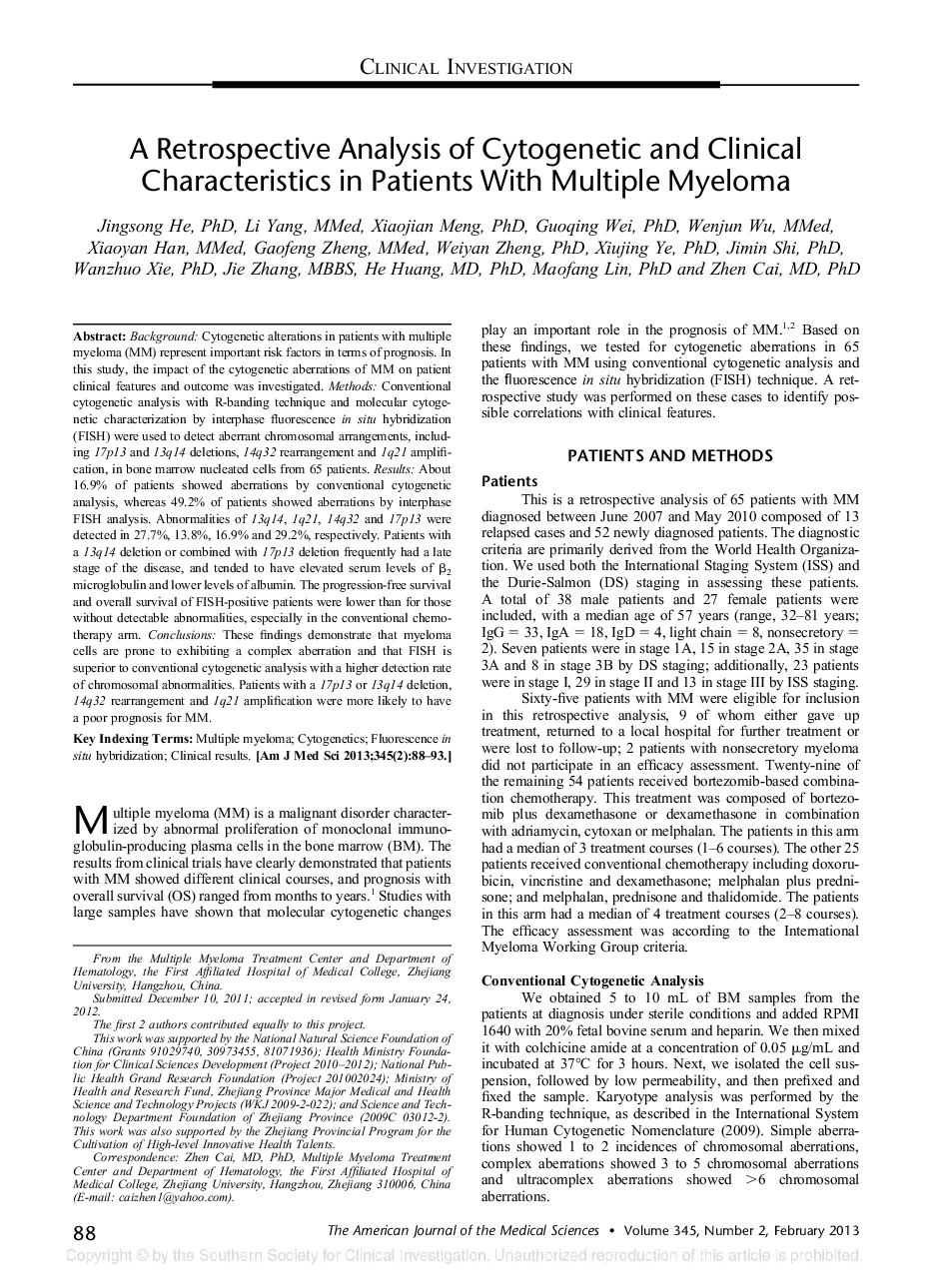| Article ID | Journal | Published Year | Pages | File Type |
|---|---|---|---|---|
| 2864001 | The American Journal of the Medical Sciences | 2013 | 6 Pages |
BackgroundCytogenetic alterations in patients with multiple myeloma (MM) represent important risk factors in terms of prognosis. In this study, the impact of the cytogenetic aberrations of MM on patient clinical features and outcome was investigated.MethodsConventional cytogenetic analysis with R-banding technique and molecular cytogenetic characterization by interphase fluorescence in situ hybridization (FISH) were used to detect aberrant chromosomal arrangements, including 17p13 and 13q14 deletions, 14q32 rearrangement and 1q21 amplification, in bone marrow nucleated cells from 65 patients.ResultsAbout 16.9% of patients showed aberrations by conventional cytogenetic analysis, whereas 49.2% of patients showed aberrations by interphase FISH analysis. Abnormalities of 13q14, 1q21, 14q32 and 17p13 were detected in 27.7%, 13.8%, 16.9% and 29.2%, respectively. Patients with a 13q14 deletion or combined with 17p13 deletion frequently had a late stage of the disease, and tended to have elevated serum levels of β2 microglobulin and lower levels of albumin. The progression-free survival and overall survival of FISH-positive patients were lower than for those without detectable abnormalities, especially in the conventional chemotherapy arm.ConclusionsThese findings demonstrate that myeloma cells are prone to exhibiting a complex aberration and that FISH is superior to conventional cytogenetic analysis with a higher detection rate of chromosomal abnormalities. Patients with a 17p13 or 13q14 deletion, 14q32 rearrangement and 1q21 amplification were more likely to have a poor prognosis for MM.
